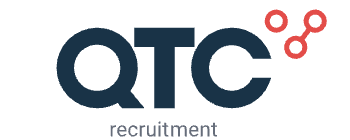Having a clear understanding of what actions may be considered retaliation can help prevent retaliation charges – or at the very least, reduce the costly penalties associated with these charges. There are steps you can take if you want to avoid expensive, unpredictable workplace retaliation claims.
Geschreven door raisa - 6 Minuten leestijd
How HR can make an impact

If you haven’t asked this of yourself – or trusted colleagues and HR allies – start asking now. It’s critical because most organisations haven’t managed to move the needle on employee engagement since the pandemic started.
Just 32% of employees are engaged, according to research from Gallup. That’s actually a slow and small decline since 2019. And don’t think that hybrid or remote work will fix engagement woes. All three groups of workers – remote, hybrid and on-site – became less engaged. And remote employees’ engagement waned the most!
The stagnation hasn’t panned out well for employers, either: Almost 40% of employees shoulder more work these days because colleagues have left; 53% are stressed; 35% are burned out; and 24% feel isolated. That’s all according to Workhuman’s Workplace Index: Mid-Year Pulse Check.
“Organisations are continuing to learn how to maintain culture and performance,” says Niamh Graham, SVP of Global Human Experience at Workhuman. “Business leaders will need to continue to invest time, resources and effort in programs that help build and maintain company culture and that help humans stay connected, productive and engaged.”
So HR professionals and their leadership partners will want to focus on culture as they move toward what’s next for employee engagement.
Here are five ideas to improve culture and revitalise engagement.
Be intentional
Many organisational leaders believe culture grows organically – and engagement follows. But most companies are still built and survive with some level of bureaucracy or protocol.
And that’s OK. Culture can take root when you’re intentional with a plan on what’s next for employee engagement and straightforward on what you hope to do.
“Communicate your plan with transparency,” says Jenn Lim, CEO of Delivering Happiness and author of Beyond Happiness. “Celebrate the wins together, as you highlight the top one to two challenges that need to be addressed. Be transparent that everything can’t be addressed overnight but progress can be made when done together.”
So, for example, if you want to break down silos so employees have more freedom to share information – and less red tape to access it – admit there’s a siloed problem and ask for ideas to fix it.
Most importantly, use employees’ ideas to solve culture issues. Employees become naturally engaged in a culture they’ve helped curate. And when their voices are heard – and acted on – they’ll more likely continue to interact and participate.
Rethink organisational structure
Most companies have a top-down structure today. Information, ideas and decisions flow from the top few to the bottom many.
It’s an organisational concept that came out of World War II. When soldiers came home from war and started their first civilian jobs, they only knew the military way of doings things: Direction comes from the commander down. As those soldiers moved up in their careers, they adopted that same management approach.
“But original organisational charts were more like trees,” says Matthew Whiat, Founding and Senior Partner at Chapman & Company Leadership Institute when he spoke at Workhuman Live 2022. “The leaders were the trunk, the base, the roots. Employees, the front line, were up high, reaching out.”
You might not be able to change your organisational chart or shake up management immediately, but you might take steps toward what’s next for employee engagement by giving employees a higher level of autonomy.
At SuccessFuel, the parent company of HRMorning, our founder Ed Satell has always encouraged job ownership, telling employees they are meant to be the CEO of their role. As employees learn (through mistakes and victories), managers lessen the reins until the employee makes the decisions on how the job gets done – and how to achieve the next great thing.
Acknowledge, manage stress
Employees who are stressed struggle to be engaged. In fact, they’re more likely to resent the experience and employer.
And the call for help to manage stress is up about 33% since the beginning of the pandemic.
“There are more stress-related calls and the severity of the issues is higher,” says Rick Taweel, CEO of Espyr, a well-being solution provider. “And the only way to normalise mental health and its impact on employee experience is to talk about it more.”
One way to do that is through “Conscious Conversations,” suggests Taweel. Invite employees to join a group – but don’t make it mandatory – with a facilitator, who is ideally a clinician and makes it a safe space to talk about struggles in and out of work.
To make it a safe space, ask employees to define it. For instance: No judgment. No politics. Respect for each other. Nothing leaves the room.
Just giving employees a space to talk about stress can help re-engage them in their workplace.
Add purpose to work
People like a higher purpose, even when it comes to their work. In fact, Gen Z and millennials are willing to turn down jobs that don’t align with their values, according to Deloitte’s Global 2022 Gen Z and Millennial Survey.
To put that into perspective, consider this: More Gen Z job candidates would prefer to work at St. Jude Children’s Research Hospital than at big corporations such as Google, Amazon and Apple, according to research from The National Society of High School Scholars (NSHSS).
Even if your organisation isn’t a non-profit or in the impact-oriented field, focus on purpose-driven employment. Talk about your values and missions that are community-, environmental-, socially responsible- and/or charitable-driven in your recruitment strategies. Whatever the purpose, you’ll also want to help employees make the connection between what they do and how it positively impacts the values and mission.
Further that by giving employees time and resources to help your business mission and their own impact-oriented passions.
Make ‘care’ a priority
“The No. 1 reason an employee leaves a company or joins a company is based on this: ‘No one cares about me. No one thinks about me,'” said Ed O’Boyle, Global Practice Leader at Gallup, when he spoke at Workhuman Live 2022.
Employee engagement suffers miserably in cultures where people don’t care.
To rebuild or strengthen the care element at work, Graham suggests: “It starts by demonstrating to employees that they are valued. Recognition is a simple way organisations can prioritise their investment and commitment to their employees and inspire them to feel connected, confident, celebrated and cared about.”
Give management and employees tools (and reminders) to congratulate and celebrate work and personal successes – such as promotions, anniversaries, birthdays, adoptions, weddings, etc.
“By doing this, organisations show they care about the employees as people, as human beings,” Graham says.
As you can read, conflicts at work are unavoidable and therefore important to resolve as soon as possible. Did one of your employees leave because of an unfixable confrontation? Let's say better next time. Does this vacancy still need to be filled? At QTC Recruitment our experienced specialists can help you find a new employee who matches your organisation’s needs. Do want to know how? Check out this page and let us help you now.
Also published by: Hrmorning.com
Want to stay informed about current Life Science and recruitment news on a regular base? Then register here for free.
